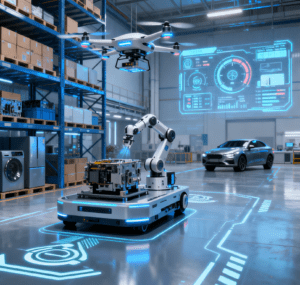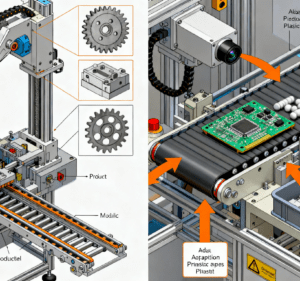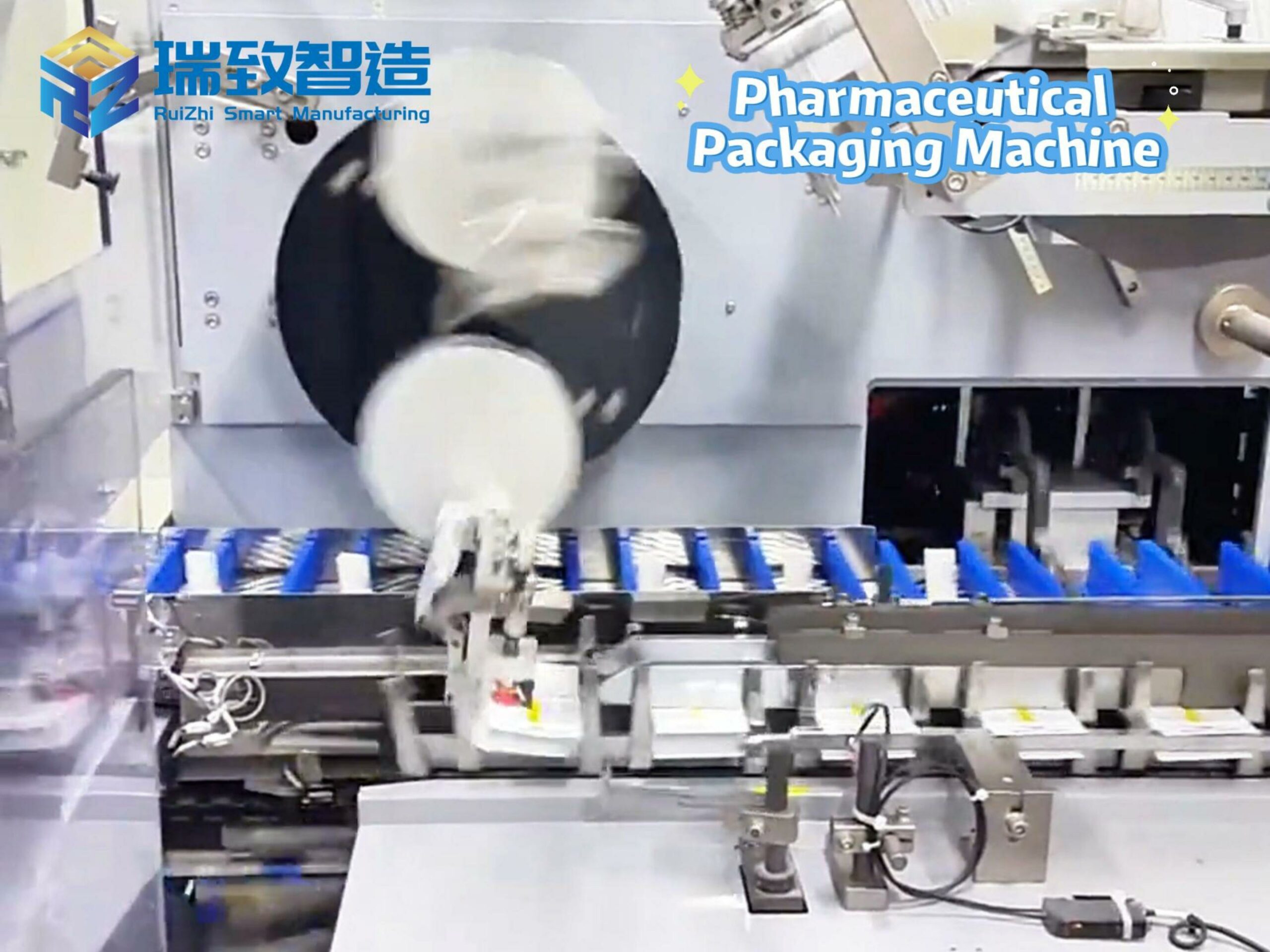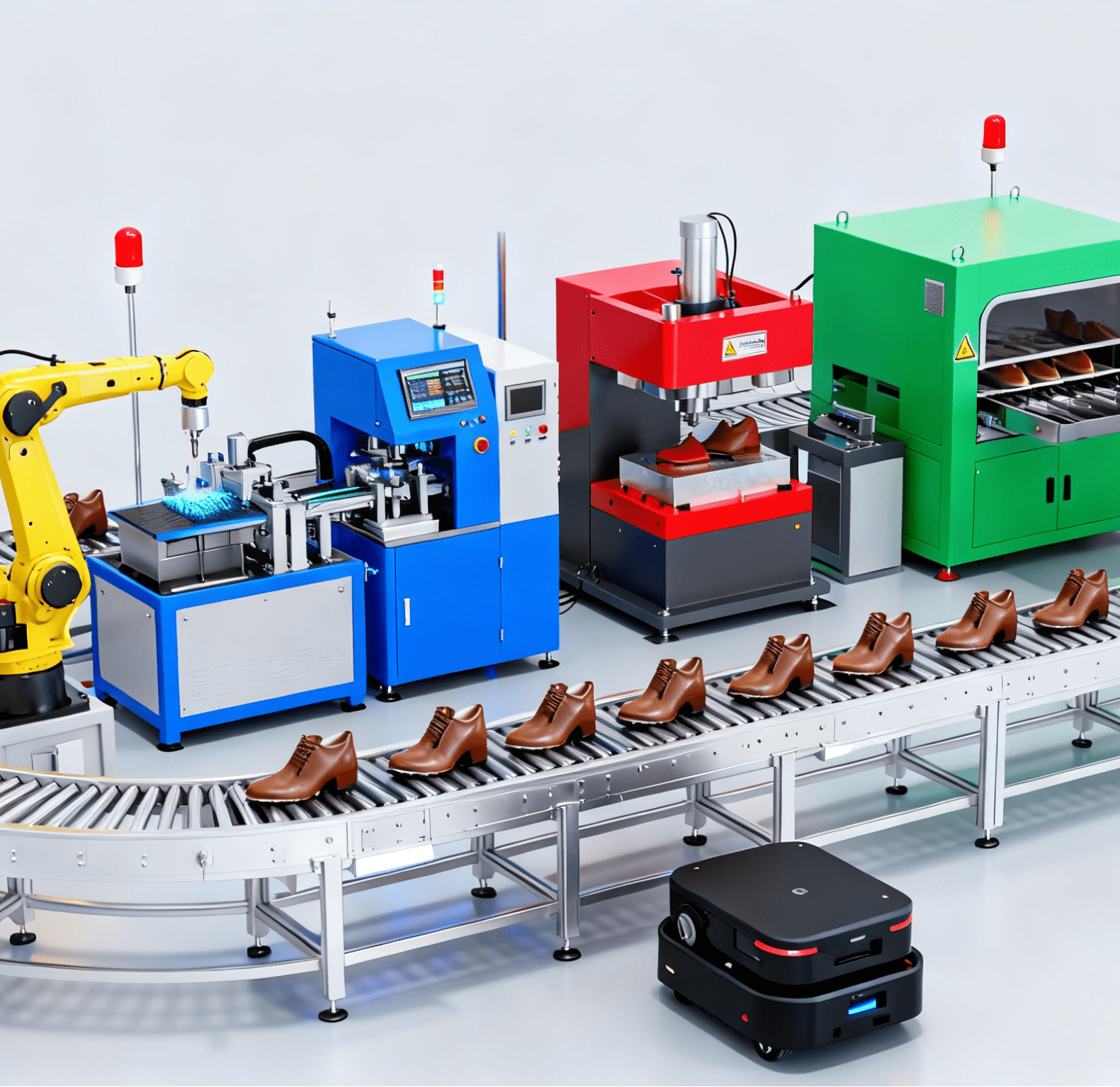
From the precise “For You” show recommendations on Netflix’s homepage to the split-second decision-making of self-driving cars as they recognize real-time road conditions, from AI diagnostic systems that detect early-stage tumors in medical imaging to supply chain solutions that dynamically adjust inventory on retail platforms—behind all these technologies that transform daily life and business lies a single core driver: machine learning (ML). As the most practically valuable branch of artificial intelligence (AI), machine learning, with its ability to “learn independently without explicit programming,” has become a “standard tool” for enterprises’ digital transformation and is even reshaping the competitive logic of every industry. However, confusion between ML and AI concepts, ambiguity in application boundaries, and ethical challenges also require in-depth understanding from every decision-maker to truly unlock its value.
Clarifying Core Concepts: Machine Learning Is Not All of AI, But It Is the Current “Backbone”
In public perception, “AI” and “machine learning” are often equated, but their relationship is essentially one of “inclusion”—AI is the goal, and machine learning is the core method to achieve that goal. By definition, AI has a broader scope: it is a general term for technologies that enable machines to simulate human intelligence, covering rule-based reasoning (e.g., early expert systems), speech recognition, computer vision, and more. Machine learning, by contrast, is a subset of AI; its core logic is to enable computers to “learn” patterns from data through algorithms. Without humans writing instructions line by line, ML systems can independently adapt to new scenarios and make decisions.
For example, traditional “spam filtering” relied on manually set keyword rules (e.g., “free,” “win a prize”). In contrast, a machine learning model analyzes massive amounts of labeled email data to independently identify spam characteristics (e.g., send time, writing style, link type)—and as more data accumulates, its recognition accuracy continues to improve.
As Thomas W. Malone, Professor at MIT Sloan School of Management and Founding Director of the Center for Collective Intelligence, put it: “Over the past five to ten years, machine learning has become the key path—even arguably the most important path—to achieving most AI capabilities.” This explains why the two are often confused: more than 90% of current practical AI applications (e.g., recommendation systems, image diagnostics, intelligent customer service) rely on machine learning as their core technology. However, it is important to clarify: machine learning is not the end of AI. In the future, by integrating reinforcement learning, deep learning, and multimodal technology, AI will evolve toward more general intelligence—and machine learning will always be the “technical cornerstone” of this process.
Penetrating Daily Life and Industry: Two Major Application Scenarios of Machine Learning
The value of machine learning has long transcended “laboratory technology” and penetrated two key areas: optimizing consumer-side experiences and revolutionizing industrial-side efficiency. Each scenario has clear technical logic and real-world cases:
Consumer Side: Making “Personalization” the Norm
In consumer scenarios, machine learning focuses on “predicting preferences and optimizing experiences through user behavior data.” Typical applications include:
Content and Service Recommendations: Netflix’s recommendation system is a classic ML case. It not only analyzes users’ “watch history” but also incorporates multi-dimensional data such as “pause/skip points,” “rating feedback,” and “similar user behaviors.” Using collaborative filtering algorithms, it generates personalized recommendation lists. Data shows this system drives 80% of Netflix’s user viewing, significantly reducing user churn. Similarly, Douyin’s “recommendation feed” and Taobao’s “Guess You Like” function dynamically adjust strategies based on real-time updated user behavior data.
Intelligent Interaction and Services: Chatbots (e.g., customer service AI) use natural language processing (NLP)-based ML models to understand user intent (e.g., “check order,” “return/refund”) and generate responses by combining historical conversation data. Voice assistants (e.g., Siri, Xiaoai) convert voice to text via speech recognition models, then execute commands (e.g., “set alarm,” “play music”) through semantic understanding models. The more they are used, the better they adapt to users’ accents and expression styles.
Medical and Health Management: In consumer healthcare, ML models analyze users’ “exercise data,” “sleep duration,” and “heart rate changes” (from smart bracelets/watches) to predict health risks (e.g., sleep apnea, cardiovascular warnings). For example, the atrial fibrillation monitoring function on Apple Watch uses an ML model trained on heart rate sensor data to provide real-time alerts for abnormal heart rhythms—helping users detect heart issues early on multiple occasions.
Industrial Side: Solving “Efficiency Bottlenecks” and “Quality Fluctuations”
In industrial scenarios such as manufacturing, finance, and retail, machine learning’s core value is to “uncover patterns from production/operation data to solve complex problems that are difficult for humans to address.” Typical applications include:
Manufacturing: Predictive Maintenance and Quality Control: Traditional factories rely on “scheduled maintenance” or “repair-after-failure,” which is costly and prone to unplanned downtime. ML models collect real-time equipment data (e.g., motor vibration, temperature, speed) via sensors to establish a “data baseline” for normal operation. When abnormal data fluctuations occur (e.g., sudden increases in vibration frequency), the model issues early warnings for potential failures (e.g., bearing wear), shifting maintenance from “reactive” to “proactive.” For instance, BMW’s factories use ML to optimize equipment maintenance, reducing downtime by 30% and maintenance costs by 25%. ML is also used for quality inspection: in auto parts production, image recognition models automatically detect scratches and deformations on part surfaces—with accuracy far exceeding human eyes, reducing defect rates from 1% to below 0.1%.
In electrical equipment manufacturing, the Maszyna do montażu styczników (a key device for assembling electrical contactors, which control circuit on/off in appliances and industrial equipment) also benefits significantly from ML. Contactors require ultra-precise alignment of metal contacts (deviation >0.02mm leads to poor conductivity) and stable coil winding. Traditional assembly machines rely on fixed parameters set manually, which struggle to adapt to minor variations in component materials (e.g., copper sheet thickness differences). ML-enabled contactor assembly machines, however, analyze thousands of historical assembly datasets (linking contact pressure, winding speed, and material thickness to product conductivity) to learn optimal parameter combinations. They can autonomously adjust mechanical arm positioning and winding torque in real time—reducing contact alignment errors to ±0.008mm and cutting coil winding defects by 60%, while also using computer vision models to inspect contact surface flatness, eliminating manual sampling inspection delays.
Finance: Risk Control and Intelligent Investment Advisory: In credit services, ML models integrate users’ “credit data,” “transaction records,” and “social behavior” (with compliance authorization) to generate credit scores and assess loan default risks. Compared to traditional “manual review,” this not only improves efficiency by over 10 times but also more accurately identifies “hidden high-risk users.” In investment, robo-advisors use ML to analyze market data (e.g., stock prices, macroeconomic indicators, industry trends) to create personalized investment portfolios—and adjust strategies in real time to adapt to market volatility.
Retail: Inventory Optimization and Demand Forecasting: Traditional retail “inventory management” often faces dilemmas of “stockouts” or “overstock.” ML models combine historical sales data (e.g., seasonal sales, promotion impacts) and external data (e.g., weather, holidays, regional population flow) to predict product demand over a period and dynamically adjust inventory allocation. For example, Walmart uses ML to optimize fresh produce inventory, reducing waste by 15% and stockouts by 20%. Convenience store chain 7-Eleven uses the technology to achieve “region- and time-specific” differentiated restocking, increasing product turnover by 30%.
A “Must-Have” for Enterprises: Current Adoption of Machine Learning and Its Drivers
With the deepening of digital transformation, machine learning has shifted from an “optional innovation” to a “must-have” for enterprise survival and competition. A 2020 global survey by Deloitte sent a clear signal: 67% of enterprises have deployed ML in their operations, and 97% plan to adopt or expand its use within one year. Behind this data is enterprises’ urgent response to three core needs: “cost reduction, efficiency improvement, and innovation.”

Why are enterprises embracing machine learning so rapidly? There are three core drivers:
Explosive Data Growth: “Massive data” generated by IoT devices, user behavior tracking, and production sensors provides “training materials” for ML. In the past, unstructured data (e.g., images, audio, text) that humans could not process can now be converted into valuable decision-making insights via ML models.
Falling Computing Costs: The popularization of cloud computing and GPU chips has significantly lowered the threshold for ML deployment. SMEs no longer need to build expensive computing centers; instead, they can use ML services (e.g., image recognition APIs, predictive analytics tools) on-demand via cloud platforms like Alibaba Cloud and AWS—at a cost that is only 1/20 of what it was a decade ago.
Competitive Pressure: When leading industry enterprises gain advantages through ML (e.g., lower costs, better user experiences), other enterprises will be at a disadvantage if they fail to keep up. For example, e-commerce platforms without recommendation systems may see user conversion rates 50% lower than competitors; manufacturing plants not using predictive maintenance may fall behind peers in production capacity due to equipment downtime losses.
More notably, ML applications have transcended “high-tech industries” and penetrated traditional sectors: Bakeries use ML to predict bread sales at different times, reducing unsold waste; Agricultural enterprises analyze soil and weather data to optimize irrigation and fertilization, boosting yields; Logistics companies use ML to plan optimal transportation routes, cutting fuel consumption and delivery time. As Alexander Madry, Director of MIT’s Center for Deployable Machine Learning and Professor of Computer Science, stated: “Machine learning is transforming, or will transform, every industry. Leaders need to understand its fundamentals, potential, and limitations.”
Boundaries That Cannot Be Ignored: Limitations and Ethical Challenges of Machine Learning
Despite its significant value, machine learning is not a “universal tool”—its performance depends on data quality, and it may pose ethical risks. These “boundaries” require enterprises to exercise extra caution in applications:
Core Limitations: “Data Dependence” and “Lack of Explainability”
Data: Lifeline and Ceiling: The accuracy of an ML model depends entirely on the “quantity” and “quality” of training data. Insufficient data samples (e.g., medical imaging data for rare diseases) may prevent the model from learning patterns accurately; biased data (e.g., overrepresentation of male resumes in recruitment data) will cause the model to “inherit” such biases, leading to gender discrimination in hiring. For example, a tech company once developed a recruitment AI model that, due to over 80% of training data being male engineer resumes, consistently gave lower scores to female applicants—forcing its discontinuation.
Unavoidable “Black Box Effect”: The decision-making process of deep learning-based ML models (e.g., CNN for image recognition, Transformer for NLP) is highly complex, making it difficult for humans to explain “why the model made that judgment.” This is particularly risky in critical fields like healthcare and finance. For instance, if an AI diagnostic model determines a patient has cancer but cannot explain “which image features it based this on,” doctors may struggle to fully trust it and develop treatment plans accordingly; if a credit model rejects a loan application without explanation, it may violate “fair lending” regulatory requirements.
Ethical Challenges: Data Privacy and Social Equity
ML applications also face ethical issues such as data privacy, algorithmic fairness, and social responsibility:
Data Privacy Leaks: Model training requires large amounts of user data (e.g., consumption records, health data). If enterprises fail to implement proper data encryption and compliance management, privacy leaks may occur. For example, a health app was penalized by regulators for illegally collecting user medical records to train ML models.
Algorithmic Bias Exacerbating Inequity: If training data reflects real-world biases (e.g., racial, gender, or regional discrimination), the model will amplify such biases. For example, a sentencing AI system in the U.S., due to harsher sentencing records for minorities in its training data, consistently gave higher “recidivism risk scores” to minority suspects—worsening judicial inequality.
Impact on Employment Structure: ML automation may replace repetitive jobs (e.g., data entry, basic customer service, traditional quality inspection). Without proper employee retraining, this could lead to unemployment. For example, automated inventory-checking AI in retail has replaced traditional manual inventory staff; if these employees cannot transition to new roles like data analysis or AI operations, they will face unemployment pressure.
In addressing these challenges, Dr. Joan LaRovere—2016 MBA graduate, Pediatric Cardiac Intensive Care Physician, and Co-Founder of the non-profit Virtue Foundation—said: “The key is to engage with and start understanding these tools, then think about how to use them better. We must use these [tools] for everyone’s benefit—AI has enormous potential, and we need to truly keep in mind when thinking about this issue: how to use it to benefit humanity and make the world a better place?”
Looking to the Future: How Should Leaders Approach Machine Learning?
For enterprise leaders, there is no need to master ML algorithm details (e.g., gradient descent, neural network structures). However, building three key “cognitions” is essential to ensure technology truly serves business goals:
Problem-Oriented, Not Technology-Oriented: Before deploying ML, first clarify “what specific problem needs to be solved” (e.g., reducing equipment downtime, improving user conversion rates), then assess whether the technology is suitable—rather than blindly following the “AI trend” and purchasing expensive, unimplementable systems.
Prioritize “Data Foundation” Construction: Before adopting ML, organize the enterprise’s data assets (e.g., production data, user data) to ensure data completeness, accuracy, and compliance. Without high-quality data, even the most advanced models cannot deliver value.
Balance “Innovation” and “Responsibility”: Establish an ethical review mechanism for ML (e.g., assessing whether models have biases, whether data use is compliant) and provide employees with retraining to reduce technology’s impact on employment. The ultimate goal of technology is to “empower humans,” not replace them.
Conclusion
Machine learning is not a “future technology” but a “tool reshaping business today.” It makes Netflix’s recommendations more personalized, factory equipment “smarter,” and medical diagnostics more accurate—but at the same time, it needs to be viewed rationally: data is its foundation, ethics are its boundaries, and human decision-making guides its direction. For leaders in every industry, understanding ML’s core value, limitations, and responsibilities is not only a “required course” for digital transformation but also a “key step” in seizing future competitive opportunities. After all, what truly matters is not the technology itself, but the ability to use it well to solve problems and create value.
What is the work done using automated equipment and machines called?




















